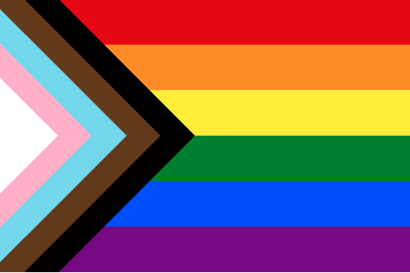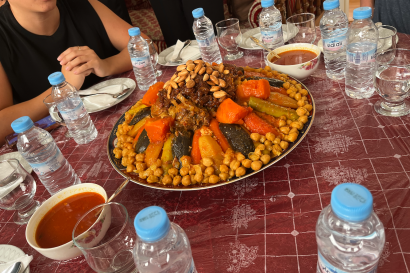At the beginning of October, I got an email containing my absentee ballot, which I printed, filled out, and prepared to mail back to the States. At this time, I also had to send to my home school an application for a program I was looking into and that application required me to send a notarized copy of my passport with it. For the sake of efficiency, I wanted to send both in one day. I figured the most obvious place to get a notarized copy of my passport would be the U.S. embassy. I wanted to call first, but I didn’t have minutes on my Moroccan phone, and I had no idea how to get more. My first instinct was to go to the phone store just down the street. There, after a of lot scattered French and Arabic, I finally came to understand that the phone store doesn’t refill phone minutes. So I thought that was a little strange, but whatever.
I asked Mohammed, an administrator at the center, where I can refill my phone minutes. He said, “Do you know the old man in the hanoot?”. A hanoot is like a little corner store that sells magazines and snack food. There’s a hanoot a right across the street from the school owned by a sweet old man, who’s always happy when you try to speak Arabic to him, but will easily switch to French for you if he feels like you’re struggling to hard for buying a bag of chips. I walked over and explained what I needed. He punched in a code on my phone, I gave him about five dollars, and somehow that was enough that my phone still works now, two months afterwards.
I find the number for the embassy, call, and hear an automated message in Arabic. Awesome. I found Mohammed and called the number again so he could translate for me. Apparently, the massage was saying that the line was disconnected. Luckily, Mohammed has a friend that works at the embassy, and he gave me her number. I was really excited when she picked up and could speak English. I was a little less excited when she informed me that the U.S. embassy in Rabat doesn’t at all deal with American passports or visas. So that sounded kind of fake, but ok. I still needed to get a copy of my passport notarized.
Mohammed overheard the phone call and offered to help me. He says that there’s a place right down the street that can help me. I assumed he was referring to the official-looking building a few blocks down that always has people with papers going through it. I started to head in that direction, he starts walking a different way. I followed him until we approach the old man in the hanoot. I slowed down, “Mohammed, I don’t think this is gonna work.” He assured me it would. We went past the snacks and magazines to a photocopier in the back. I paid 20 cents and got a photocopy of my passport, and also vague confusion. Mohammed then took me to the official-looking building that I thought we were going to go to in the first place. When we got there, he sat me in a chair, took my paper, and disappeared into a loud crowd surrounding a non-visible service counter. I sat there and thought about what a notarized copy of something is supposed to be: a copy made by a government official, who checks to make sure the original is legitimate, stamps and signs it all at the same time so there is no doubt that the papers are real. Mohammed comes back with my papers, stamped and signed. No one asked to see me or my passport, and the stamps are not in English (not that I though they would be). At that point, I was pretty unsure if the program I was applying to would accept this, but it was all I had.
The next step was to get envelops, stamps, and put my letters in the mail. I already knew from a friend that had previously tried to mail something that the post office doesn’t sell stamps or envelops, so I went to Nisrine, the program director, if she just had two spare envelopes she could give me. As she was giving me the envelopes, she asked if I knew where to get stamps. When I said no, she asked, “You know that old man in the hanoot?”.
By this point, I’m pretty familiar with the old man in the hanoot. Honestly, what does he not sell. It takes a some time and some talking to other people to figure out how many stamps each envelope needs. Then I needed to confirm, quite a few times, that I was sending them to the United States. I bought the amount of stamps he recommends and tried to stick them on, but I couldn’t get the paper off the back (turns out they aren’t like stickers, and I had to lick them. Oops).
After a walk to the post office, I was informed by the clerk at the counter that I need to send my letters at the bank. To this day, I don’t know what the post office does. So I went to the bank, took a number tab, and waited. After about a half hour, the numbers being called were in the 50’s and I had, like, 137. I left in search of Mohammed, and I found Nisrine.
She said that there’s little yellow mailboxes all over the city that I can drop my letters in. Despite never seeing these before, I wandered around for a while until I found one outside of a little hanoot. I posted my letters and bought myself a candy bar to celebrate the end of this five hour ordeal; I was really proud of myself.
Two days later, I check my mail to see that my letters had been returned to me on account of incorrect postage. Great.

Cayt Holzman
<p>Hi! I'm Cayt and I study anthropology and French at Penn State. I'm studying abroad to further my education and I'm here to share my experiences with anyone who wants to read them.</p>






